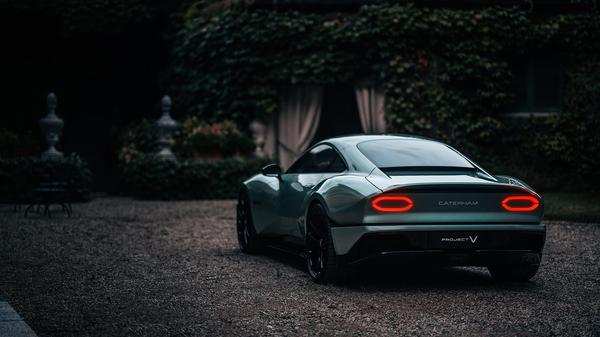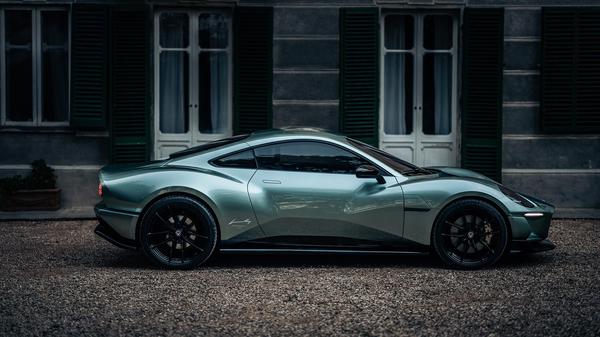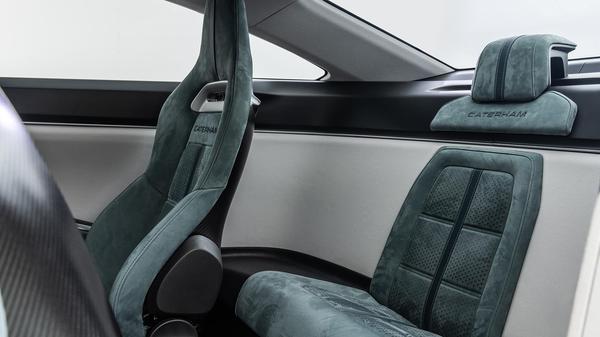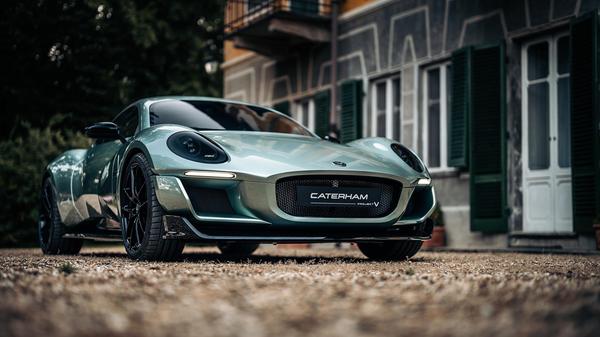
B
ased on a design first conjured up in the late 50s, this ultra-minimalist open top sports car is still about the most fun you can have on four wheels, and if you’re willing to put up with its extreme take on back-to-basics driving nothing comes close.
But, like all carmakers, Caterham needs to look beyond internal-combustion cars and, even if the cut-off for selling them has been extended, it needs to go electric to survive. But how to stick to its brand values of ultra-lightweight sports cars with the focus on fun when we all know batteries and motors are heavy and lacking sensory thrills? Step up the Project V, officially a concept but one with its feet on the ground in terms of production viability and the potential to raise Caterham’s profile while staying true to its driver-focused roots. • The first all-new Caterham in decades and since the aborted tie-up with Alpine a few years back • Swoopy lines combine retro style with modern manufacturing and materials for an amazingly light kerbweight of just over 1,000kg • Lean build means it only needs 272 horsepower to hit 0-62mph in 4.5 seconds and 143mph flat out • A relatively small battery helps keep the kilos off but it’ll still do nearly 250 miles on a full charge • Quirky ‘2+1’ seating includes a small rear seat between the driver and front-seat passenger


Design and models available
Caterham’s staple has been various evolutions of the open-wheeled Seven it bought the rights to from Lotus back in 1973. An attempt at a fully bodied car in the late 90s had its thunder stolen by the groundbreaking
Lotus Elise before a later partnership with Alpine also went south, the French brand going it alone to create the
A110 we now know and (very much) love. There’s more than a sense of that car in the Project V’s styling, which is a collaboration between designer Anthony Jannarelly and Italian firm Italdesign. It also has hints of Jannarelly’s own retro sports car, while Italdesign’s back catalogue ranges from mainstream icons like the original VW Golf through to oddities like the DeLorean DMC 12 best known for its adaptation into the time travelling car in Back To The Future. Suffice to say, it knows how to make concepts a reality, the Project V’s classic looks built over a split battery pack to maintain a low centre of gravity, a rear-mounted motor driving the back wheels and lightweight construction using carbon fibre, aluminium and other composites.

Interior and tech
Maximum thrills through minimal weight is core to Caterham’s philosophy, its iconic Seven basically little more than an engine, four wheels and a steering wheel. Even the roof is little more than a token effort and, given previous experience, prone to blowing off into the undergrowth if you go too fast. The Project V sticks to the minimalist vibe but with a modern twist and a fully enclosed cabin with – shock! – proper doors, trim on the dashboard and even electronic dials. It’s all elegantly done, using bought-in components and smart design, like a central screen Caterham expects you to plug your phone into for navigation, phone and other mod cons. Compared with a Seven it looks positively luxurious, while still minimalist in a way that a target buyers coming from Alpine, Lotus or older Carterhams will appreciate. A central rear seat supposedly offers increased flexibility and there will be a 2+2 option with two spaces in the rear but we’d expect most owners to use this space for carrying luggage rather than additional passengers.

Batteries/range
Where mainstream electric cars have been piling on weight and we’ve got used to the idea of even mid-sized hatchbacks weighing as much as chunky SUVs Caterham has instead embraced the ‘virtuous circle’ of weight saving. So, a smaller battery keeps the weight off, meaning it doesn’t need as much power to deliver the performance fans expect, charges quicker and everything from brakes to tyres and suspension can be lighter as well. To put that into context a Cupra Born – one of the sportier mainstream EVs currently available – has similar power output and range to the 272 horsepower and 247 miles claimed by the Project V but needs a much bigger battery to achieve it. And weighs a lot more, so is nothing like as fast or agile.





